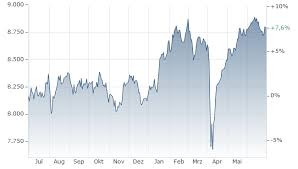Understanding the FTSE 100: Current Trends and Insights

Introduction
The FTSE 100 Index, often referred to simply as the ‘FTSE’, is a crucial benchmark for the performance of the largest publicly traded companies in the United Kingdom. It includes the top 100 companies listed on the London Stock Exchange by market capitalisation. As such, it serves as a vital indicator of the overall health of the UK economy and investment environment. Given the current economic climate, understanding the FTSE 100’s movements and trends has never been more important for investors and businesses alike.
Current Performance and Factors Influencing the FTSE 100
As of October 2023, the FTSE 100 is experiencing a wave of volatility driven by various global economic factors. Recent data shows that the index has fluctuated within a range but remains resilient in the face of ongoing inflationary pressures and geopolitical uncertainties. For instance, energy prices have surged due to ongoing conflicts in Eastern Europe, which has impacted UK businesses heavily reliant on energy imports. Additionally, interest rates, which have been hiked to curb inflation, have also played a significant role in influencing market sentiment.
The technology sector has shown remarkable growth despite these challenges, with companies like ASOS and Wise contributing positively to the index. Conversely, sectors such as retail and travel have struggled, reflecting consumers’ changing spending habits in the wake of economic uncertainty. Analysts believe that fluctuations in consumer confidence and changing habits will remain key areas to watch as the FTSE 100’ progresses into the final months of 2023.
Forecasts and Implications for Investors
Looking ahead, analysts predict that the FTSE 100 may continue to experience volatility but expect a gradual recovery as economic conditions improve. Factors such as stabilising global supply chains, potential easing of inflation pressures, and consumer spending recovery could provide a favourable environment for the index’s rebound. Additionally, the continued roll-out of technological innovations and digital transformations across sectors may offer boosted performance among tech-heavy stocks.
Investors are advised to keep a close eye on macroeconomic indicators and corporate earnings reports as they navigate the investment landscape. Diversifying their portfolios could also mitigate risks associated with specific sectors facing headwinds.
Conclusion
The FTSE 100 remains a critical component of the UK investment landscape. As it continues to evolve in response to an array of domestic and global factors, both current and prospective investors must stay informed about trends and ratings within this index. Understanding the intricacies of the FTSE 100 can enable more informed investment decisions, embracing opportunities while navigating the complexities presented by the current economic climate.









